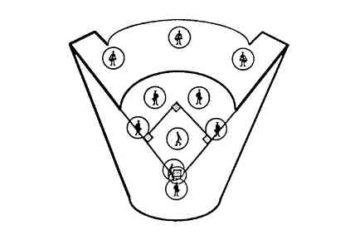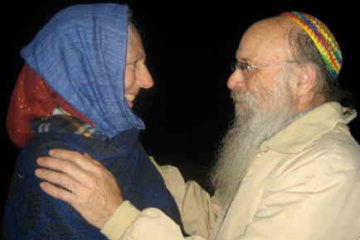In 1999, I became enamored of two half-hour children’s shows that aired on Channel 44 (KBHK, Oakland) from 3-4 pm, in the same time slot as Jim Lehrer’s NewsHour, a serious KQED broadcast for adults. The shows are Sailor Moon and Poke´mon. They are both made in Japan and dubbed into contemporary English by actors who attempt to emulate the voices and manners of precocious adolescents.
Poke´mon has already crossed over into popular culture with its menagerie of 150 creatures, each of which possesses a name, an array of powers and weaknesses, and, most of all, a playing card, useful for trading or hoarding – I mean collecting. This cardboard profile may be supplemented by an electronic game, which gives today’s children instant access to and portable control of the Poke´mon world. Both adventure stories are complex templates of psychologically malleable stages of growth and involve acquisition of skills, development of values, and formation of character. Thus, they are concerned with applying idealistic concepts in the arena of daily life. Here are the lyrics to the theme song for Sailor Moon:
“Fighting evil by moonlight,
Winning love by daylight,
Never running from a real fight –
She is the one called Sailor Moon.She will never turn her back on a friend;
She is always there to defend,
She is the one on whom we DE-pend –
She is the one called Sailor Moon…She is the one – Sailor Moon!”
Sailor Moon, the show, lacking all the accoutrements of the boys’ toys, is less well-known than Poke´mon but has a strong appeal for some – mostly younger – girls, for whom toy companies have manufactured Sailor Moon’s electronic pulsar or wand, her tiara and other costumery, and her image, along with that of her cohorts, the four other Sailor Scouts – all schoolgirls with secret identities.
Their heavenly-endowed powers enable them to transcend the petty and transitory pleasures and problems of a protected environment and deal with alien infiltration on a cosmic scale, requiring them to exert themselves to the utmost. The nature of the challenges they face varies from day to day and tends toward the abstract, but the proximate villainy seems rooted in familiar emotions, to which they themselves are occasionally prone – jealousy, envy, and zealotry – though in the case of their antagonists, it is fueled by an intense desire to destroy what it cannot own.
The Sailor Scouts – Serena, Leda, Amy, Rae, and the just-introduced fifth Sailor Scout – have celestial helpers in higher realms, but this band of girls nevertheless seems necessary to the survival of the planet they are sworn to protect – and its human culture, even at the expense of anything approaching verisimilitude. For example, in Sailor Moon’s inaugural episode, we encounter such dilatory behavior in the face of onrushing danger that if the time line for outer events were the same as for Serena’s protracted waffling, she would be overcome before she had ever exercised her unfamiliar powers. (In fact, such temporal dissonance is a feature of many adventure movies, where the delayed reaction of the protagonist is impossibly drawn out, undermining the otherwise “willing suspension of disbelief” (S. T. Coleridge) which alone lends credence to these improbable scenarios. The effect is not of heightened suspense but to call attention to the movie-maker’s artifice. I surmise that the fault is the editor’s, but the director bears ultimate responsibility for his decision to pack every inch of footage into the final product, not realizing the harm thereby done to the vehicle’s overall dramatic effect. We soon understand that no lasting damage will ever be done to these heroines.
Alternatively, one might understand Serena’s hesitation as an internal process, compressed in time, and therefore still subservient to the plot line and occurring within its time frame. However, to so convince the viewer, other cinematic techniques would need to be deployed in order to show the character’s internal funk. Judged by realistic standards, her irresolution is quite plausible, as she has just been notified of her mission and given her first assignment, without, however, being provided with any preparation or training. She must trust Luna, a talking cat, who coaches and urges her on. Only the impending danger convinces Serena to utter the code words and fling her super-charged body into action against the grey, malignant (and hell-of-spooky) forces of evil.
Apparently, she and her sister Sailor Scouts – each of whom is mystically linked to a planet (Mercury, Venus, Mars, or Jupiter) – have been selected by some divine spiritual source as the defenders of earth – the only ones who can defeat these evil forces, personified as creepy sorcerers and demon witches, all of whom strive to obtain the remaining three precious rainbow crystals for their dominatrix, Queen Beryl of the Megaverse.
Their very purity and innocence seems to act as a shield, neutralizing the death rays and energy-stealing tricks of their assailants. Serena, as the most powerful of the band, is the key to the Scouts’ success. Yet in private life she attends Crossroads Junior High School and is a spoiled and pampered adolescent dreamer with a well-developed appetite for junk food and a crush on Tuxedo Mask – “What a hunky guy!” (English version) – who, like a deus ex machina, intervenes in her struggles at crucial moments, such as when she is weak and fainting – even unconscious – or appears to be overmatched
and about to succumb to her enemies. Despite her professed love for him, he declares, without explaining why, that he cannot be with her except for these brief and tantalizing moments. As the faithful viewer gradually learns, he possesses two of the rare crystals (the Scouts, collectively, possess only one), and also has a secret identity, unknown to the girls but recently revealed to Queen Beryl, who passes this knowledge along to her underlings, Malachite and Zoicite.
In an episode broadcast in late July, 1999, Sailor Moon discovers his secret and he, hers. And in a transcendent moment, just when Tuxedo Mask (Darian) seems to have been slain by the treacherous Zoicite, the seven rainbow crystals miraculously combine and become the long-sought silver imperium crystal and Sailor Moon (Serena) is revealed before all as the mysterious lunar princess, the subject of the orphaned Darian’s dreams.
The actual damage done to anyone in this magical razzle-dazzle is slight and temporary. Nobody is killed or maimed, and evil is dispersed but never destroyed, leaving it free to concoct more bizarre plans of mass hypnosis, co-optation of friendly institutions (like nursing or teaching), application of illusion-producing poison gas, and other acts of chicanery designed to fool, foil, and dominate earth’s hapless humans.
With little evidence of parents in their lives, the Scouts seem to have taken Luna, along with Artemis, another cat, who has just materialized with Sailor Venus, as their surrogate parents and, often frustrated mentors, who are not above displaying occasional weaknesses or vulnerable traits themselves. While teasing each other, the girls sometimes also target the prim and protective – and oh, so English – Luna, who turns out to enjoy
male company of the feline persuasion as much as the girls adore cute guys, though their interest in them seems limited to fantasizing about dates, while the handsome young men in whom they are interested seem reluctant to reciprocate. Remember, the theme song describes Sailor Moon as “fighting evil by moonlight, winning love by daylight.” One might conjecture that their battle against the evil Megaverse – personified by the obsequious yet arrogant alien couple Malachite and Zoicite – is equally directed against
hidden drives and desires in themselves. Some of the plot devices which oblige Darian to distance himself from Serena (without explaining why) also serve to protect the youthful audience from witnessing the logical next step of this passionate couple.
So what role do the Sailor Scouts play? While retaining their girlish charm and naivete, they regularly morph themselves into powerful warrior women, discharging their duties as secret emissaries of goodness. Thus they inspire many of their young female viewers to imagine themselves possessed of supernatural power and essential value – which, of course, they are.
II.
“I want to be the very best,
Like no one ever was.
To catch them is my real test,
To train them is my cause.I will travel across the land,
Searching far and wide,
Each Poke´mon to understand
The power that’s inside –Poke´mon! Gonna catch them all –
(I know it’s my destiny) –
Oh, you’re my best friend,
You’re a world we must defend.Poke´mon! Gonna catch them all –
(A heart so true) –
Our courage will pull us through –
You teach me and I’ll teach you –Poke´mon! Gonna catch them all,
Gonna catch them all – Poke´mon!”
Poke´mon also features a theme of good versus evil but starts from a different premise – and quite an outlandish one at that. The premise is that numbers of creatures with specific powers are hidden in the natural world. These creatures can be caught and tamed and used for good – or evil. This trope puts me in mind of the medicinal herbs and plants found in rain forests and the numerous species of plants and animals newly discovered every day – and in danger of extinction should their habitats be destroyed. There is even a suggestion, as in the episode about Moon Mountain and its moonstone,
that they originated in outer space.
With this trope as the subtext of the story line, the viewer is drawn into a tale of adventure wherein Ash Catchem, an impetuous young Poke´mon trainer, accompanied by his friends Misty and Brock, accomplish their mission despite the opposition of their rivals, Team Rocket, who inevitably show up to spoil the fun, without whom, however, there would not be much excitement.
In contrast to the spirit of respect and cooperation that characterizes our ambitious but chivalrous band of three, Team Rocket, comprised of Jessie and James, along with their Poke´mon companion, Meowth, is a stew of internecine squabbling. James is a hen-pecked, pussy-whipped incompetent, upon whom his dominant partner turns her anger when her plans go awry. Their pride and over-confidence is always their downfall, and their self-aggrandizing motives make them unworthy of victory. Meowth, with a voice like that of Gilbert Godfrey, the voice of Jaffir’s Parrot in Aladdin, is actually
the brains of the team, but he is unable to restrain Jessie and James from excess zeal in carrying out the plan he has cooked up for them. Consequently, they always outsmart themselves and spoil matters just when they seem on the verge of success.
And they have their own little introductory verse duets, by which they define their mission:
“Prepare for trouble –
And make it double!To protect the world from devastation,
To unite all peoples within our nation,
To denounce the evils of truth and love,
The extend our reach to the stars above –Jessie! James! Blast off at the speed of light!
Surrender now, or prepare to fight!”
The Poke´mons are captured by force or persuasion (you guess which method is preferred by each group), held captive in smooth, compact spheres, each about the size of a baseball, and released by being hurled toward an opponent – usually another Poke´mon – when a challenge is made and battle is joined. The relationship of Poke´mons to their trainers is like that of a falcon to a falconer, but sometimes like that of a pet to its owner, as is the case with Pikachu, the cutest of them all, functioning like the mascot
of the Poke´mon trainer and his allies who are the positive protagonists of this drama.
Yet Pikachu also can be a formidable fighter. The electrical charge in his lightning-kinked tail and his puffy cheeks are dangerous to any attacker. However, he can be neutralized by a ground-based type of Poke´mon, one of whom is often deployed against him for this very reason. (To explain the various categories and powers of individual Poke´mons is outside the scope of this essay. There are many reference works available for those interested in pursuing the subject further.)
Meowth, the mascot of Team Rocket, is far from cute. He is vicious and nasty by nature, a nature that might have been further warped by contact with his trainers. There is also the tragic case of Poke´mons who have been abandoned by their trainers! – a shocking and inhumane occurrence, which leaves these Poke´mons, such as Squirtle, who form a band of their own in one episode, undisciplined and a danger to society. Here we find an analogue to the domestication of animals and their potential of returning to a feral
state and a reference to such universal values as kindness to animals and responsibility for them. I call attention to the impressive way in which this adventure story sub-textually incorporates the values of deep ecology, already pervasive in the educational systems of developed countries, while relying on minimal didacticism. It offers a critique of selfish motives while praising cooperative problem-solving through its portrayal of an exemplary model of
harmonious and loving, even if occasionally quarrelsome, relationships.
Dressed in light-weight hiking clothes and carrying slender day-packs, our trio traverses unfamiliar country on foot, stopping near where the presence of certain Poke´mon are suspected or can be detected. They visit caves, forests, meadows, and beaches. They voyage to the sea bottom and scale cliffs and peaks. They have no visible means of support but proceed like eco-warriors, part of an international network of Poke´mon trainers with faith in their ultimate goal of mastery.
They develop empathic bonds with their Poke´mons and sometimes even end up in cozy proximity with Team Rocket, their nemesis (a situation that would be inconceivable in Sailor Moon), usually due to a mutually perilous survival situation. Despite the animosity and antagonism of
these rivals, they are playing the same game. And though the males are sometimes discouraged (Ash) or distracted (Brock), a steady Misty holds them in line.
In distant cities there are gyms and formal competitions for Poke´mon trainers, and ranks and status to be attained, but in the field is the real training, and it sometimes seems that the trainers themselves are being trained. Such is one consequence of the symbiotic interplay between Poke´mon and trainer, each the ally of the other. In crisis situations there are even Poke´mon hospitals, where skilled doctors and nurses can save the lives of these endangered creatures.
Situated opposite the NewsHour, as these two shows are, it is not too much to say that they offer an alternative to the world as managed by clumsy adults, a better, more harmless world, though one still rife with passion and conflict, but one in which goodness not only can but does repeatedly triumph, and the wounds of one day are healed by the next.
[This essay has been difficult to place. I first sent it to Parents’ Press, a San Francisco Bay Area publication, where it was deemed it “too academic.” Next I sent it to Tikkun. There it was deemed “too personal.” The best response I received came from Laurence Goldstein, editor of the Michigan Quarterly Review, who sent it back with a scrawled note, which said, “I wish I could publish this.” Why not, Laurence? Well, anyway, I elect to publish it here, on the web, where unsuspecting Poke´mon or Sailor Moon fans might discover it. – RG]


